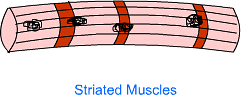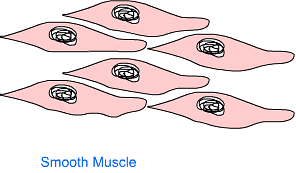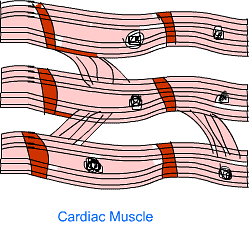Tissue - NCERT Solutions, Class 9 (IX) Science PDF Download
Tissue
NCERT SOLUTIONS
Exercises
Question – 1 - Define the term “tissue”.
Answer:- A group of cells which is meant to perform a specific function is called tissue.
Question – 2 - How many types of elements together make up the xylem tissue? Name them.
Answer:- Xylem is composed of these elements: tracheids, xylem vessel, xylem parenchyma and xylem fibre.
Question – 3 - How are simple tissues different from complex tissues in plants?
Answer: Simple tissues are composed of similar cells, while complex tissues are composed of different types of cells.
Question – 4 - Differentiate between parenchyma, collenchyma and sclerenchyma on the basis of their cell wall.
Answer:-
| Parenchyma | Collenchyma | Sclerenchyma |
| Cell wall is thin. | Cells wall is thickened at corners. | Cell wall is thickened all around. |
Question – 5 - What are the functions of the stomata?
Answer: Functions of stomata are as follows:
- Exchange of gases
- Transpiration
Question – 6 - Diagrammatically show the difference between the three types of muscle fibres.
Answer



Question – 7 - What is the specific function of the cardiac muscle?
Answer: Cardiac muscles facilitate contraction and relaxation of heart; which results in pumping action of the heart.
Question – 8 - Differentiate between striated, unstriated and cardiac muscles on the basis of their structure and site/location in the body.
Answer:
| Striated Muscles | Unstriated Muscles | Cardiac Muscles |
| Unbranched fibres; with striations. | Unbranched fibres; with striations. | Branched fibres with striations. |
| Present in voluntary organs. | Present in involuntary organs. | Present in the heart. |
Question – 9 - Draw a labelled diagram of a neuron.
Answer

Question – 10 - Name the following.
Answer: Simple epithelium
Answer: Tendon
Answer: Phloem
Answer: Adipose tissue
Answer: Blood
- Tissue that forms the inner lining of our mouth.
- Tissue that connects muscle to bone in humans.
- Tissue that transports food in plants.
- Tissue that stores fat in our body.
- Connective tissue with a fluid matrix.
- Tissue present in the brain.
Answer: Nervous tissue
Question – 11 - Identify the type of tissue in the following: skin, bark of tree, bone, lining of kidney tubule, vascular bundle.
Answer: Skin: Epithelium, Bark of tree: Epidermis, Bone: Connective tissue, Lining of kidney tubule: Cuboidal Epithelium, Vascular bundle: Complex plant tissue
Question – 12 - Name the regions in which parenchyma tissue is present.
Answer: Parenchyma is present in mesophyll of leaves, fruits, flowers and young stem.
Question – 13 - What is the role of epidermis in plants?
Answer: Epidermis in plants provides protective covering to the underlying tissues. In xerophytes, epidermis has a waxy coating which prevents water loss.
Question – 14 - How does the cork act as a protective tissue?
Answer: Cork forms an impervious layer over underlying tissues. Cork prevents entry of water to the underlying tissue.
Question – 15 - Complete the table:

Answer:

In Text Questions
Question – 1 - What is a tissue?
Answer: A group of cells which is meant to serve a special function is called tissue.
Question – 2 - What is the utility of tissues in multicellular organisms?
Answer: Tissues facilitate division of labour. Different tissues are responsible for different functions, which is important for the functioning of a multicellular organism.
Question – 3 - Name types of simple tissues.
Answer: Simple tissues are as follows:
- Parenchyma
- Collenchyma
- Sclerenchyma
Question – 4 - Where is apical meristem found?
Answer: Apical meristem is found at root apex, shoot apex, leaf buds, etc.
Question – 5 - Which tissue makes up the husk of coconut?
Answer: Sclerenchyma
Question – 6 - What are the constituents of phloem?
Answer: Phloem is composed of sieve tubes, companion cells, phloem fibres and phloem parenchyma.
Question – 7 - Name the tissue responsible for movement in our body.
Answer: Muscular tissue
Question – 8 - What does a neuron look like?
Answer: Neuron looks like a star-shaped cell with a tail.
Question – 9 - Give three features of cardiac muscle.
Answer: Three features of cardiac muscle are as follows:
- Cells are branched fibres.
- Striations are present on cells.
- Cells are capable of continuous contraction and relaxation.
FAQs on Tissue - NCERT Solutions, Class 9 (IX) Science
| 1. What is the definition of tissue in biology? |  |
| 2. How many types of tissues are there in animals? |  |
| 3. What is the role of epithelial tissue in the body? |  |
| 4. What are the different types of plant tissues? |  |
| 5. How do tissues work together to maintain homeostasis in organisms? |  |

|
Explore Courses for Class 9 exam
|

|


















